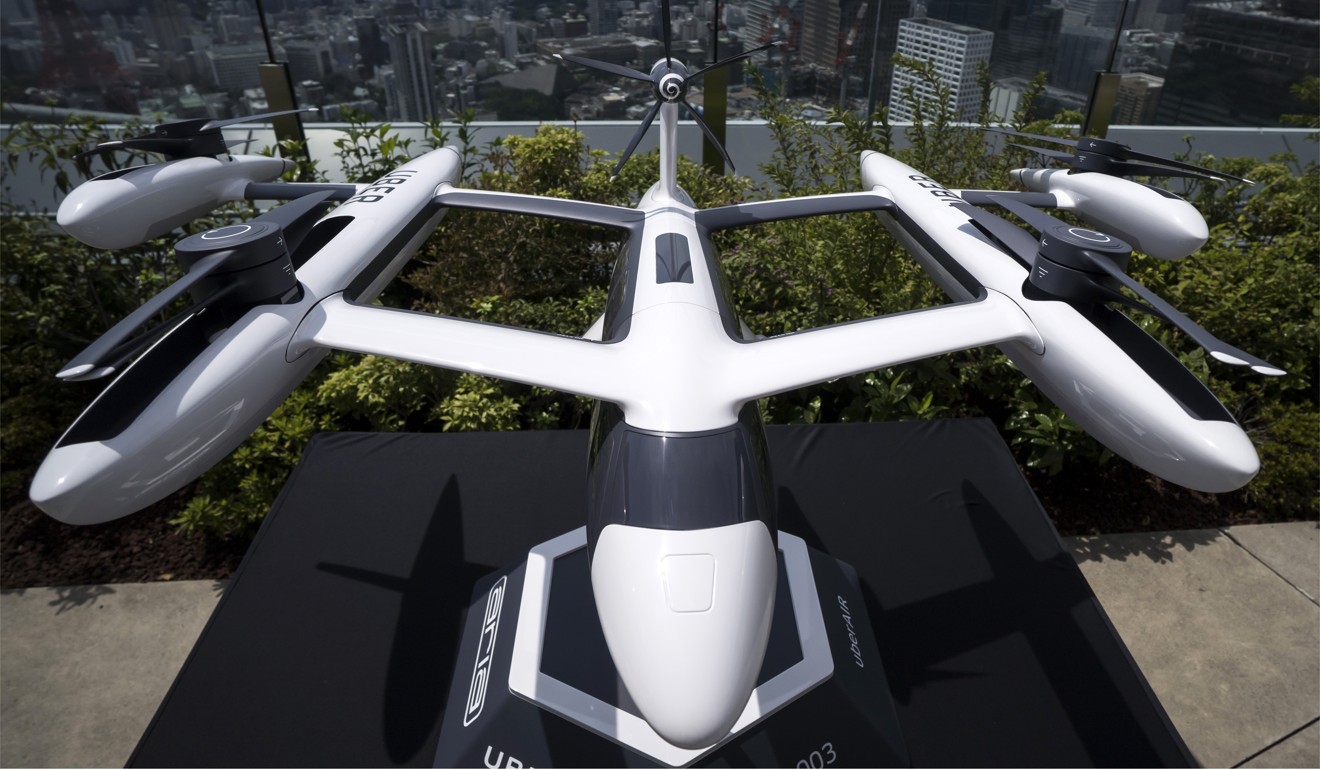
High hopes for ‘flying cars’ before US Consumer Electronics Show
- Many companies are developing concepts, but analysts suggest they won’t be available for the average consumer and could lead to airborne mayhem
Will flying cars take off at the upcoming Consumer Electronics Show? Well, sort of.
The prototypes will not be soaring over the Las Vegas Strip during the technology extravaganza which runs from January 8-11.

But a number of flying car designs will be on display, portending what many see as an inevitable airborne future for short-range transport with vertical take-off and landing, or VTOL.
NFT Inc co-founders Maki and Guy Kaplinsky, a couple developing a flying vehicle in Israel and California, will have their vision on display at show, with a media session on Sunday.
“We believe we have a winning design that will enable us to make the Model T of flying cars – a low-cost production model,” Guy Kaplinsky said at a Silicon Valley office park where a prototype model was being assembled.
A doorway to the rear of the NFT office in Mountain View opened onto large blue tarps hung from the ceiling to hide the workshop.
A team of veteran aviation engineers is focused on research at the start-up’s facility in Israel, and the founders plan to expand the staff of 15 people.
The start-up is designing hardware and software, while enlisting original equipment manufacturers to crank out products at scale.
“We learned from Tesla that Elon Musk spent too much time on the production side,” Guy Kaplinsky said. “We are spending our time on the technology side and will partner with companies on assembly.”
The NFT vehicle with a projected price tag of US$50,000 will function as a car, but be able to take off or land vertically and fly on autopilot.
Several companies, including Uber and start-ups backed by Google co-founder Larry Page, are working on people-carrying drones or similar flying vehicles.

In Japan, volunteers in a “Cartivator” group are out to build a “Skydrive” flying car and have set their sights on using one to light the flame at the opening of the Olympic Games in Tokyo in 2020.
The crowdfunded effort has backing from Japanese auto giant Toyota, where some Cartivator members work. A scaled-down replica of “Toyota’s flying car” is to be shown at CES.
“Our team consists of people with diverse professional backgrounds and is working hard every weekend towards developing the flying car,” the group said at a cartivator.com website. “We aim to build a prototype, establish theory of flight control, as well as form alliances with major corporations to make mass production of the flying car a reality.”
NFT is trying to marry a plane with a car so no airports or heliports would be needed.
“We believe door-to-door is the solution,” Kaplinsky said. “Our approach is more for the mom and three kids; you load everyone in the car one time and get where you need to go.”

A smartphone mapping application could be paired to a navigation centre hosted in the internet cloud, routing drivers to take-off points and providing instructions to autopilots in cars.
The electric powered NFT vehicle is targeting ranges of 500km flying (310 miles ) and 100km driving (60 miles).
Kaplinsky said the start-up seeing US Federal Aviation Administration approval as early as 2024.
He expected to have a drive-fly vehicle ready to demonstrate late next year.
Uber offers a glimpse of its flying car dream
Kaplinsky felt it likely that, in the long run, flying cars would be part of ride-sharing fleets to make better use than those owned by individuals.
Gartner automotive analyst Mike Ramsey says autonomous flying vehicles are coming, but will not disrupt the way people travel.
Ramsey said cost, regulation, and battery life are just a few of the hurdles for flying vehicles.
“There still has to be a limit to the number of these things that can be in the air at once,” he said.
While one person with a flying car may be amazing, 500 people in a city darting about in flying cars could bode airborne mayhem.
Geely buys US start-up Terrafugia and promises a flying car by 2019
“It’s really cool, and it will have applications, but they are unlikely to be regular Joes like you and me jumping over all the traffic,” Ramsey said.
The analyst said flying vehicles could catch on as lower cost options to medical helicopters, military transport, or accessing rugged rural areas.
“I do think the technology will happen,” Ramsey said.

.png?itok=arIb17P0)